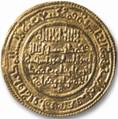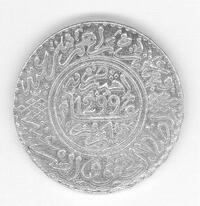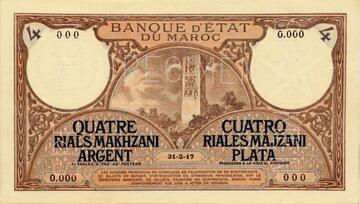The little explorer
You use money to buy gifts for your friends or things you need. But have you ever wondered how money was created and what is its history?
At the Museum, you will discover over 1200 coins and banknotes that go back in time and tell the story of money ...
The origins of money
A long time ago, money did not exist. Goods were exchanged by barter, that is, one good was exchanged for another. But this system posed many problems because goods were difficult to transport or to divide and exchanges were only made based on needs. People then looked for other ways to carry out their exchanges: they created coins from precious metals - gold, silver and copper. The first coins were created in Lydia (present Turkey) in the 8th century B.C: these are oval-shaped coins.
| Gold coin struck in Lydia by King Croesus | |
|---|---|
 |
 |
Shortly afterwards, the Greeks will also strike silver coins; These are the owls of Athens.
| Owls of Athens | |
|---|---|
 |
 |
The introduction of currency in the Maghreb region
Carthage (current Tunis) introduced currency in the Maghreb region by the end of the 5th century BC and imposed on its coastal cities, Numidia (current Algeria) and Mauritania (Morocco) to use its currency.
The first coins struck in the kingdom of Mauritania date back to King Bocchus I in the 1st century BC. The monetary issuance, that is to say the circulation of currency, became important in Mauritania only with King Juba II. The latter struck coins mainly of silver and bronze. One of the most famous coins of his reign is the golden aureus issued on the occasion of his marriage with Cleopatra Selene.
The Museum holds the unique copy of this coin in the world!
| Unique golden aureus issued on the occasion of the marriage of Juba II and Cleopatra Selene | |
|---|---|
 |
 |
Under the Roman occupation, Roman coinage circulated in Mauritania tingitana (north of present-day Morocco). They are essentially gloden aureus, or silver denarii like the coin below struck under the reign of king Augustus in the 1st century AD.
| Silver denari struck under King Augustus | |
|---|---|
 |
 |
The Arab-Muslim Empire
After falling under the hands of the Roman Empire and the Byzantine Empire, our country was annexed, at the beginning of the 8th century, to the Arab-Muslim Empire then led by the Umayyads. To mark its independence from Byzantium rule, one of the Caliphs, 'Abd el-Malik Ibn Marwan’, struck a new currency that contained no image and put forward the Muslim profession of faith, the Shahada (Testimony).
| Silver dirham struck by the caliph, 'Abd al-Malik | |
|---|---|
 |
 |
The birth of a Moroccan State
The Idrissids were the founders of the first Muslim dynasty in Morocco. They settled in Walila (near Meknes) and then in Fez where they coined mostly silver dirhams.
| Silver dirham coined in 789 AD by Idrîs 1st | |
|---|---|
 |
 |
The Great Empires of Gold
The Almoravids conquered in the 11th century a vast empire that stretches from the river Senegal to the Ebro (river in Spain) and from the Atlantic ocean to Algiers and dominated the gold trade. The coins they struck, the Almoravid dinars, better known under the name of "marabotins", are thus only composed of gold and are widely used throughout the Mediterranean region.
| Almoravides Dinar, "marabotins", in gold | |
|---|---|
 |
 |
This was followed by the Almohad and Merinid dynasties, which devoted themselves more to uniting the Maghreb.
In the middle of the 12th century, the Almohads rose against the Almoravids and reigned over the Maghreb. They did not authorize any other currency in the conquered territories except for their coinage consisting of square dirhams and round half-dinars.
| Gold dinar coined in Fez by the Almoravids | |
|---|---|
 |
The Sherifian Empires
Since the 16th century, it is the families of Arab origin and descendants of the Prophet - Saâdiens then Alaouites - who took control of Morocco. The manufacturing of coins underwent real modernization from the end of the 19th century, under the reign of Sultan Moulay el-Hassan Ist, who created the Hassani silver rial, coined in Paris, London and Berlin.
| Hassani silver rial coined in Paris under My Al-Hassan I |
|---|
 |
Banknotes
Following a financial and monetary crisis, the Banque d’État du Maroc, the ancestor of Bank Al-Maghrib, was created in 1907 and tasked with improving the monetary situation in Morocco and issuing currency.
During the Protectorate, Moroccan banknotes and coins were manufactured by the Banque de France, and the first Moroccan banknotes were issued in 1911.
| 20-rial notes issued in 1911 | |
|---|---|
 |
After the Independence of Morocco in 1959, the Banque du Maroc replaces the Banque d’État du Maroc and issued a new currency, the dirham.
| 10 dirhams notes issued in 1960 |
|---|
 |
As of 1987, Dar As-Sikkah, in charge of the manufacturing of currency in Morocco, was created.
| 10 dirhams with the portrait of the late His Majesty Hassan II, 1987 |
|---|
 |






